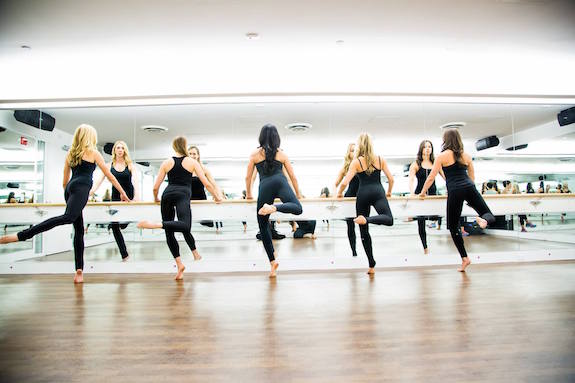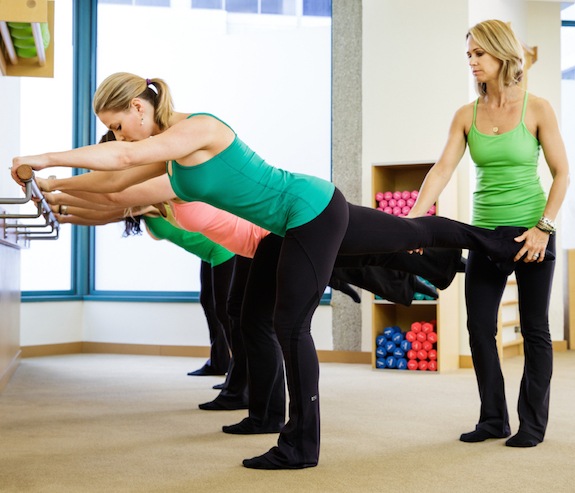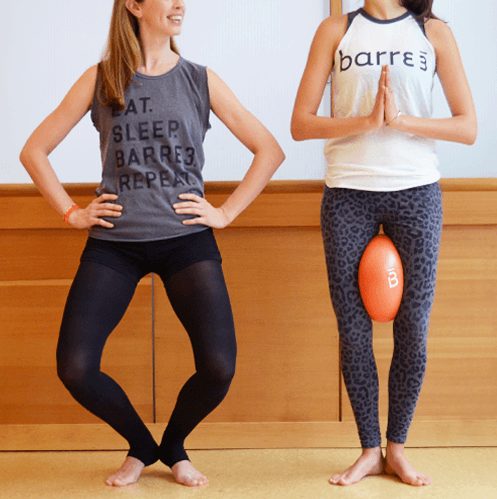5 Reasons Why 2015 Is the Year of the Barre
There are fitness trends, and then there are full-on phenomena. And barre workouts—which take their cues from sculpting ballet warmups—are definitely the latter, gaining grippy-socks-wearing devotees in droves. (There's a reason why we predicted that 2015 is the year that those who haven't heard of barre, or tried a class yet, will: There are now close to 700 corporate-owned studios spread throughout the country, with 100 more slated to open in the next year.)
But what, exactly, is it about barre that's made it catch fire like spinning, CrossFit, and yoga? Here's everything you need to know about barre's awesome ascent.
So, really—why is barre so crazy popular all of a sudden?
1. It's an effective, kick-ass workout, say barre experts Jill Dailey, founder of The Dailey Method, and Sadie Lincoln, founder of Barre3.
"The barre industry has been continually growing and expanding for so many years because the classes work," Dailey says, not mincing words. Lincoln couldn’t agree more. "Barre classes, in general, effectively shape the body in an exciting group format set to music—that's a recipe for success," she says.
2. You can take barre classes anywhere—in nearly every state, and tons of suburbs. While Barry’s Bootcamp and SoulCycle are mainly in major cities, barre isn’t strictly an East or West Coast thing, nor is it confined to major metropolitan areas—it's everywhere. (And many studios like Physique57 and Barre3 offer classes online.)

{{post.sponsorText}}
Okay, so why are the studios now everywhere? Unlike an equipment-laden studio filled with $10,000 treadmills or 55 spin bikes that record and display your torque, a barre studio, with railing, flooring, and a sound system, is typically a much easier financial proposition.
For proof of barre's meteoric rise, just look at Pure Barre, which now has roughly 275 studios across the country—with openings steadily increasing every year since 2012 (42 in 2012, 66 in 2013, and 85 in 2014). It's a safe bet that more American women—and yes, it's mainly women—have lined up at the barre than have hopped on a SoulCycle bike.
3. The ballet roots—and body—resonates with women looking for a workout that creates long, lean muscles. And it's not a boot camp, so there's less of an intimidation factor, as it doesn't get into the killer moves of high-intensity interval training or result in its supposed "bulking" of muscles. Also, on the sweaty spectrum, barre's a workout that doesn't necessarily require a shower, so you stand a chance of preserving your blowout while you pulse, tuck, and water-ski in a barre studio, if you're squeezing it in before work or on your way to dinner.
4. Like yoga, there's now tons of variety. While the props tend to be the same (a ballet barre, a toning ball, and free weights), barre styles now range from the yoga- and Pilates-inspired Barre3, to the more athletic, interval-based Flybarre. So you can sample until you find the perfect fit.
Among the 700 studios now open, you've got your pioneers (like Physique 57, Core Fusion Barre at Exhale, and The Bar Method), popular players with a national presence (think Barre3, The Dailey Method, Flybarre, Cardio Barre, and Xtend Barre) as well as growing regional brands (like Pop Physique and Cardio Barre in California and Go Figure in Connecticut), plus indie studios from Barre Tribeca to Pulse 163 in Miami.
5. Barre turns a lot of die-hard students into business owners. A lot of barre studios have used a franchise model to spread across the country, and a lot of those studios are opened by adherents who started out as students themselves and became obsessed or saw a more satisfying career ahead of them than what they thought they'd do with their lives.
"Most of our franchise owners have been Dailey Method students [it now has 52 locations across the country] and many of them have worked as Dailey Method teachers prior to becoming owners," Dailey says. "They become part of the culture and see what an amazing impact it can have on their lives and want to share that with their own communities or create community around it."
Lincoln has experienced this with Barre3, too. "Many of my owners opened Barre3 because they moved and had to have a studio in their new hometown," she says.
The bottom line? Whether you belly up to the barre of a growing, national brand or try a smaller studio, it's probably time to invest in a pair of pretty grippy socks. —Molly Gallagher
Loading More Posts...


